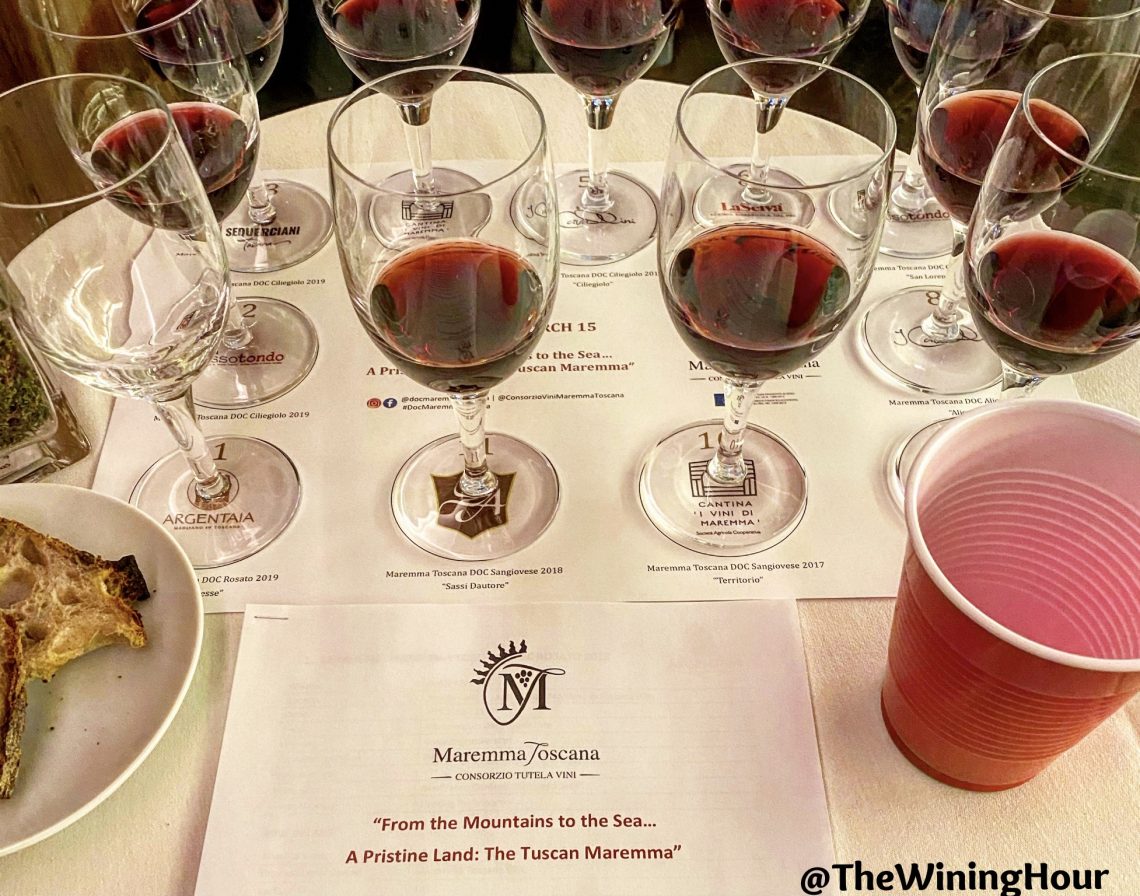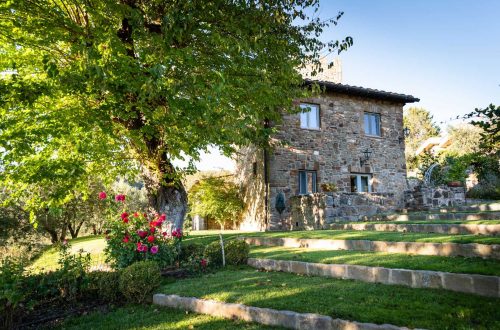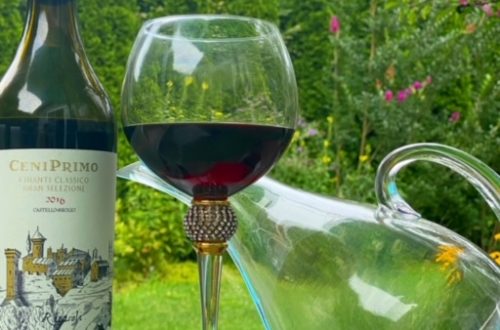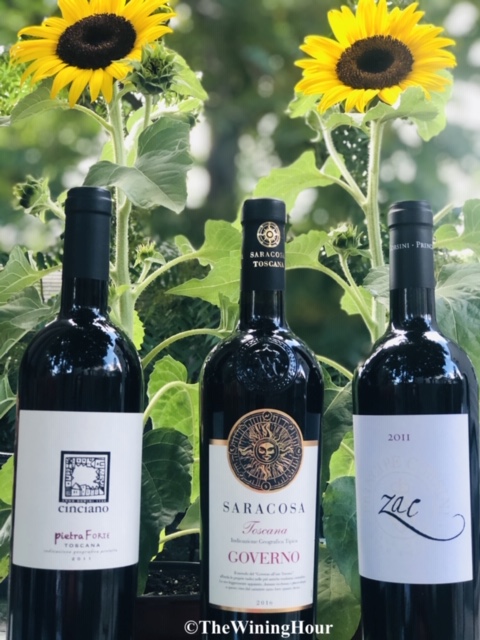
Oh my, More Maremma Please!
I had the pleasure of attending a Master Class and Wine Lunch sponsored by Il Consorzio Tutela Vini Della Maremma Toscana. This event was special for several reasons. For one, it was the first in-person tasting event I actually attended in over a year, due to the pandemic. It was fantastic to venture out, to see familiar faces and to learn, sip and socialize with others. Moreover, I was able to taste wines and learn more about a favorite wine region-Tuscany. In particular, the focus was on the pristine land, the Tuscan Maremma.
Although it’s the Tuscan Maremma, Maremma is located between Toscana and Lazio, and the borders include the coastal territory south of Livorno and the northern part of Lazio. The Maremma landscape consists of both high elevation inland areas and coastal areas, which leads to a variety of soil types, such as volcanic tufo, clay and limestone. This also leads to a variety of climatic, although all temperate, influenced by the Mediterranean. Maremma is divided into three areas: Northern Tuscan Maremma (Alta Maremma), Southern Tuscan Maremma (Maremma Grossetana) and Maremma Laziale. Most references to Maremma are to Maremma Grossetana. Maremma has 5 hilly areas, which all have different soils and climatic conditions: Colli di Maremma, Colline Metallifere, Colline di Tufo, Costa d’Argento, Colline Amiatine.
As the territory of Maremma involves extremely diverse pedoclimatic (soil and climate) conditions, it is the ideal terroir for cultivating both indigenous and foreign grape varieties. Maremma Toscana DOC wines are produced across the entire province of Grosseto, a vast 4,500 km2 area in southern Tuscany, with 8,770 hectares of vineyards across the slopes of Mount Amiata, the Maremma coastline, the Argentario peninsula, and the Island of Giglio.

The Consorzio mentioned that there is no need to spray the vines and that they do not really have issues with fungus. Their clean air has not really been impacted by heavy industry. Therefore, over 50% of the producers are organic and biodynamic, because chemicals are just not needed. In addition, the wineries in Maremma have been working with new and modern techniques. During this masterclass, it was interesting to learn about some of these techniques, and to see that they are going beyond Sangiovese. It is important to recognize the Maremma as more than just the home of the popular Morellino di Scansano. The winemakers are producing a more “innovative” range of Tuscan wines, capable of satisfying different needs and palates, from reds made with a single variety or a blend of foreign grapes, like Cabernet Sauvignon, Merlot, Syrah, Cabernet Franc, and Petit Verdot, or indigenous Sangiovese, Ciliegiolo and Alicante-based reds.

The Wining Hour Tastes Maremma
The Master Class involved a guided tasting of 11 wines from Maremma, which was hosted at Il Gattopardo, NY. Here are a few of my highlights:
Argentaia Le Papesse, Maremma Toscana DOC Rosato 2019
Le Papesse was the only offered at the tasting. Le Papesse is 100% Sangiovese. Lovely pale pink with fresh cherry and strawberry flavors, along with floral notes of rose bush. Argentaia is located in the medieval town of Magliano, near the Tuscan coastline with limestone rich soil, which also transfers good salinity to this wine. The bottle displays beautiful terracotta garden, in which the managing director describes the artwork as the beauty between nature and history. Light, soft and refreshing. A perfect aperitivo. 13.5% ABV.
Sequerciani Ciliegiolo, Maremma Toscana DOC2019
This wine is 100% Ciliegiolo from the coastal village of Tatti, localita of Sequerciani, 250 meters above sea level. At Podere Sequerciani, they produce natural wines only from native Tuscan vines. Sequerciani’s philosophy is “grapes, sun, earth,” as they do believe in any other additives. “We do not manipulate, add or remove anything: we let time take its course and the wine expresses itself, like a message in the bottle, talking about itself and its territory.”
Serquerciani respects the environment and practices, Biodynamic agriculture and environmental sustainability. In producing this wine, there is spontaneous fermentation, no filtration and no added sulfites. They age in amphorae, which allow lots of oxygen and keep the flavor of the grapes.
Their Ciliegiolo is a deep cherry red color in the glass, with bright red fruit aromas and herbal, balsamic notes on the palate. This wine has bright acidity and good tannic structure. The location of the soil makes it chock-full of mineral deposits. 14% ABV.
Of note, Podere Sequerciani is the special project of Reudi Gerber, Swiss filmmaker.
I Cavallini Ciliegiolo, Maremma Toscana DOC 2018
This Ciliegiolo comes from I Cavallini in Manciano, a hilltop village in the southern part of Grosseto. This is 100% Ciliegiolo grown in clay rich soils. A medium ruby appearance with lovely and inviting aromas. On the palate, bright cherry with a good balance of fruits and acidity. Light woody notes indicate oak aging. The Mediterranean influence leads to softer, silkier tannins and makes this wine less astringent. 13.5%ABV.
Sassotondo San Lorenzo, Maremma Toscana DOC Cilieiolo 2015
San Lorenzo is 100% Ciliegiolo from a single vineyard in Pitigliano. This wine is beautiful deep ruby color suggesting the body. After a manual harvest from the volcanic tufo soil and fermentation, this wine matures for 30 months in Slavonian oak barrels. It is bottled for another 12 months. San Lorenzo has an abundance of cherry fruit, herbal notes, acidity and tannins, along with a certain saline quality. The 2015 vintage shows that the wine is aging very nicely. It may have lost a little bit of its freshness, but is a beautiful wine nevertheless.14.5% ABV. Sassotondo is certified organic since 1994. They also practice biodynamic and sustainable farming.
Fattoria Mantellassi Querciolaia, Maremma Toscana DOC Alicante 2016
Fattoria Mantellassi, located in the medieval town of Magliano, has been producing wine since 1960. On their hillside vineyards, they mostly produce Sangiovese, but they also do a lot with Alicante. This Alicante has beautiful aromas of red fruit, violet and chocolate spice. Nice fruit balance with soft tannins and a lingering finish.
Cantina “I Vini di Maremma” Territorio, Maremma Toscana DOC Sangiovese2017
Cantina ‘I Vini di Maremma’ is a cooperative located in a costal farming town near the Marina di Grosseto.
Territorio has a very interesting nose. Territorio is 100% Sangiovese aged in concrete tanks for 12 months. The concrete aging leads to this wine’s great body. Although this there is raspberry and spice on the nose, this wine is not fruity. Instead, there are immediate herbal notes and undeniable minerality. Territorio is a fine, elegant and easy drinking wine. Great for the summer and a red that can be enjoyed with fish.
Le Sode di Sant’Angelo Sassi Dautore, Maremma Toscana DOC Sangiovese 2018
Le Sode di Sant’Angelo is located in Montebamboli, a hamlet and località in the comune of Massa Marittima.
Sassi Dautore is 85% Sangiovese and 15% Alicante vinified in stainless steel. The wine aged in barriques for four months, refined in stainless steel for another three months and then bottle aged before release. In the glass, this wine is ruby red with violet flecks. Sassi Dautore very fresh and aromatic, with notes of red fruit, violet and spice. The palate is complex, with red berry fruit, chocolate and evident minerality. Sassi Dautore is elegant and full-bodied with velvety tannins and a lingering finish.
This masterclass and tasting was followed by a walk-around tasting of many more wines produced with indigenous grapes from Maremma, including Ciliegilo, Alicante, Sangiovese, Vermentino, Ansonica. Over 33% of Maremma’s wine production involves white grapes, but mainly Vermentino. I was able to taste a few different varietals, and I even tasted some Maremma Cabernet Sauvignon.
What is your experience with wines from Maremma Toscana?


















